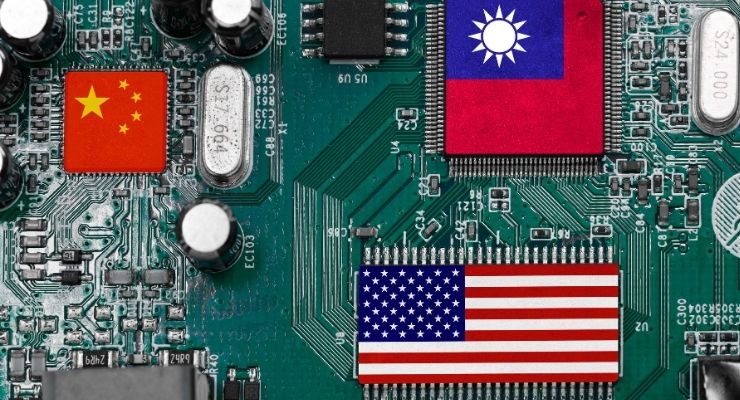In May 2020, TSMC announced a $12 billion investment in the construction of an advanced semiconductor manufacturing facility in Phoenix, Arizona. In December 2022, it was decided to build another plant, bringing the total investment to $40 billion. In April 2024, it announced that it would expand its investment to $65 billion and plan to build a third plant. In March 2025, it was reported that TSMC intends to invest an additional $100 billion in the construction of three new fabs, two advanced packaging facilities, and a large R&D center. If the investment is completed, TSMC's total investment in the United States will reach $165 billion. TSMC's project has been attracting much attention, and for TSMC, it can consolidate the cooperative relationship with the United States, expand the market share in the United States, and enhance global competitiveness. For the United States, it will help to localize semiconductor manufacturing, reduce dependence on overseas chips, enhance the competitiveness of the national economy, promote the development of semiconductor supply chain clusters, and promote innovation and long-term growth. A recent report from TechInsights provides a key clue to the project's cost profile and raises a lot of thinking about TSMC's U.S. expansion strategy.
It has long been widely believed that TSMC is expensive to set up a factory in Arizona. After all, labor costs in the United States are high, and according to conventional wisdom, this seems to push up production costs significantly. However, TechInsights' analysis shatters this stereotype. According to the report, the production cost of TSMC's Arizona plant is only 10% higher than that of Taiwan. One big reason for this is that large-scale fabs like Arizona are extremely automated, with labor costs accounting for only 2% of total costs. This means that although the level of human compensation in the United States is higher than that in Taiwan, the impact of labor costs in the overall production cost composition is greatly weakened.

Figure: TSMC's Arizona wafer production costs are only 10% higher than Taiwan's (Source: TechInsights)
In terms of equipment procurement, the difference in the cost of acquiring equipment from suppliers such as ASML is not significant, whether in the United States or Taiwan. As the core investment of the fab, the cost of semiconductor manufacturing equipment accounts for a huge proportion of the total cost. Since the cost of equipment procurement is similar, the Arizona plant does not incur additional high expenses on this critical expense. This further shows that the Arizona factory is not a heavy financial burden for TSMC as speculated.
From the perspective of the international situation, after the Trump administration took office, it actively promoted the development of the U.S. semiconductor industry, and TSMC's large-scale investment and production capacity layout is a response to U.S. policy. This move will not only help TSMC consolidate its cooperative relationship with the United States and expand its share of the U.S. market, but also further enhance its competitiveness in the global semiconductor industry with the help of U.S. industrial resources. Moreover, TSMC plans to expand rapidly in the United States, building five new facilities, advanced packaging factories and R&D centers, demonstrating its determination to deepen its presence in the American market.
However, we can't ignore the challenges faced by the Arizona plant. The report points out that there is a gap between the United States and Taiwan in terms of R&D resources. The semiconductor industry is a technology-intensive industry, and R&D capabilities are the core elements to maintain a competitive advantage. After years of development, Taiwan has accumulated rich experience in semiconductor R&D and talent reserves, which is a key factor for it to occupy an important position in the global chip industry. The relative inadequacy of the United States in this area may affect the speed of technological innovation and process upgrades in the Arizona factory in the future, limiting its further development in the field of high-end chip manufacturing.
Overall, the construction of TSMC's Arizona factory did not show unbearable pressure at the cost level, which laid a good foundation for TSMC's global capacity layout adjustment and market expansion. However, in terms of R&D resources, U.S. factories still need continuous efforts and optimization. For the entire semiconductor industry, TSMC's move will also accelerate the transfer of the global semiconductor supply chain to the United States and reshape the industrial landscape.






